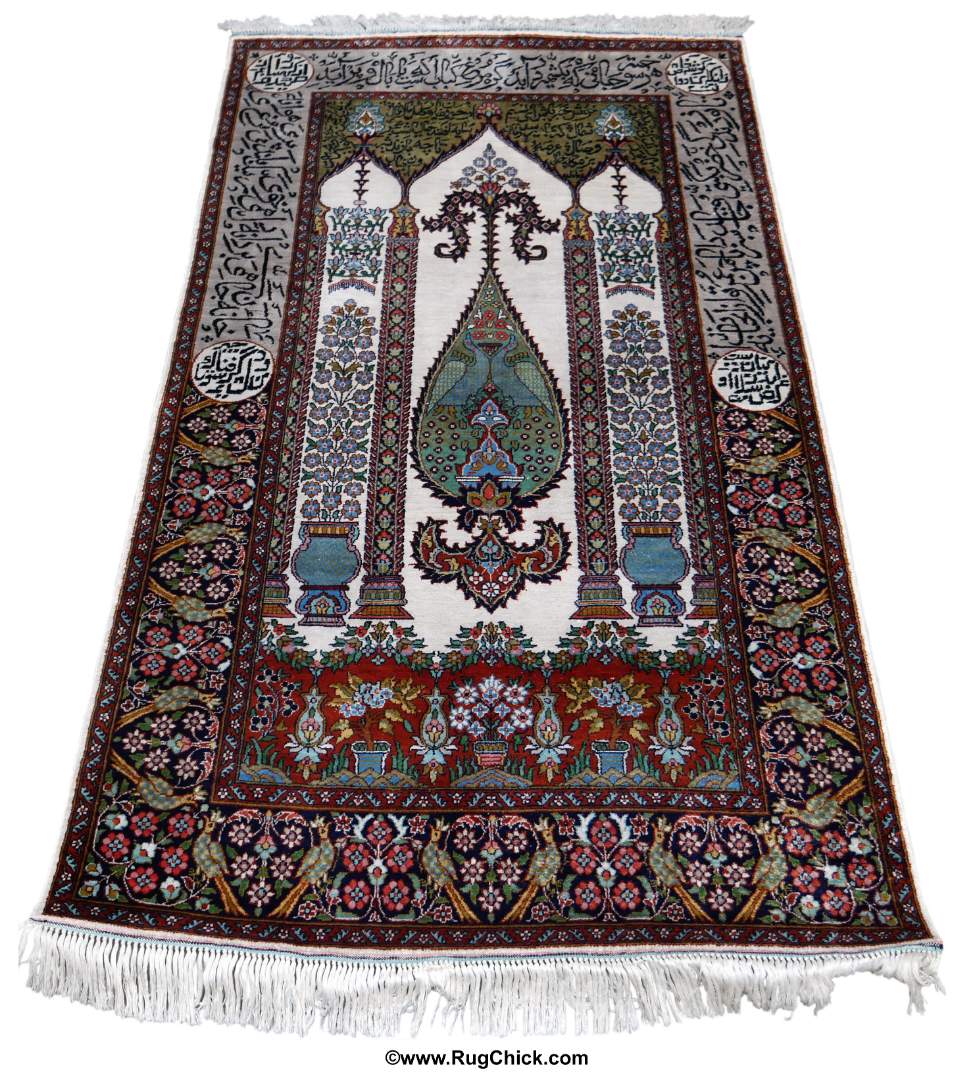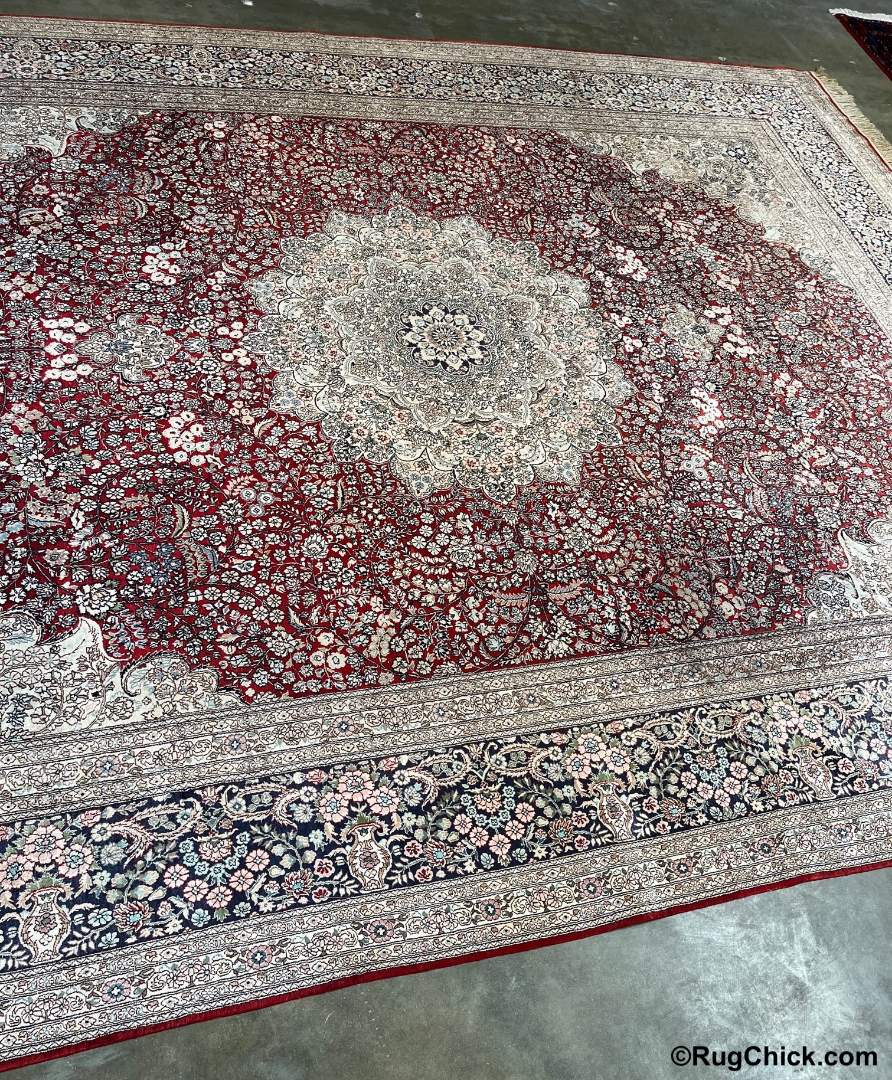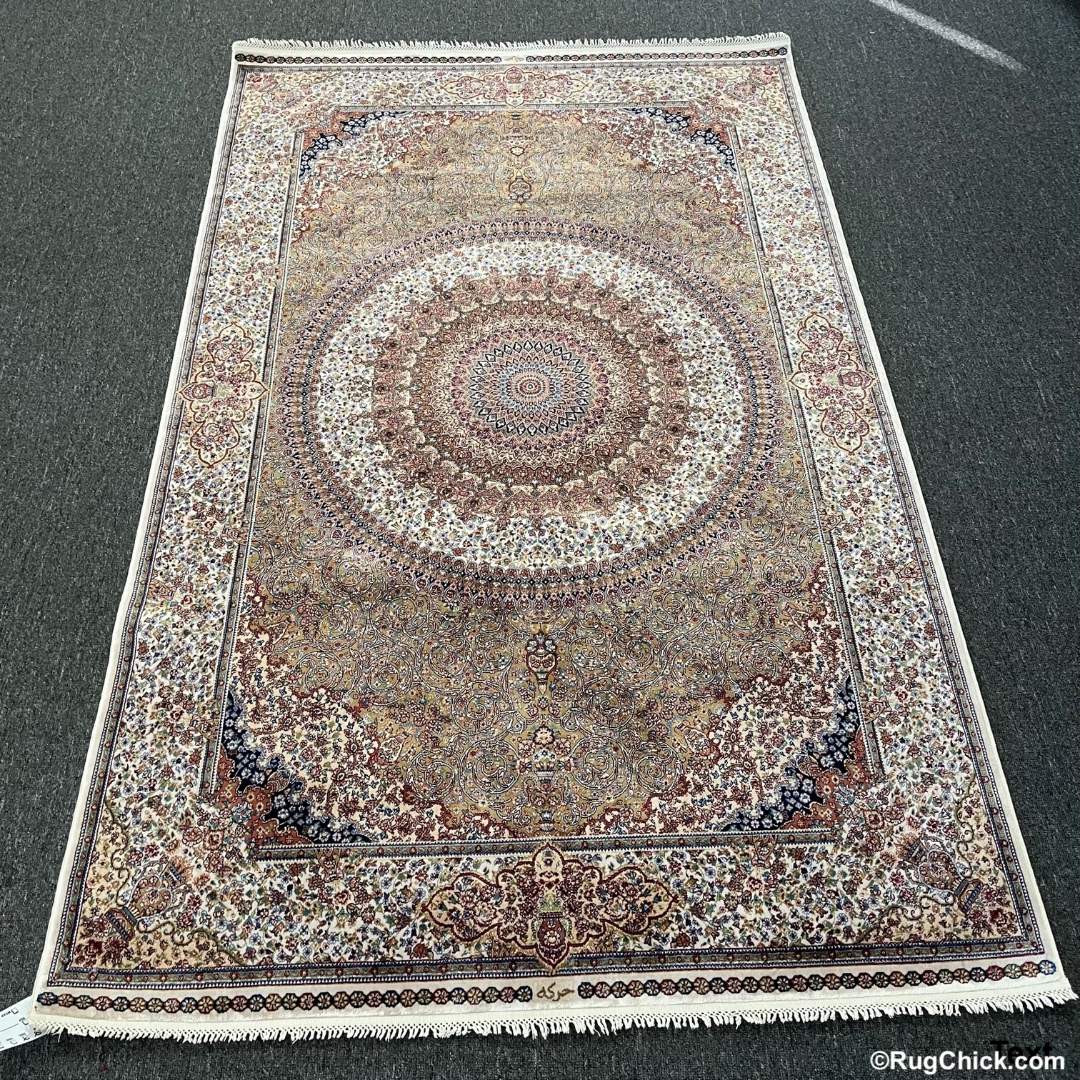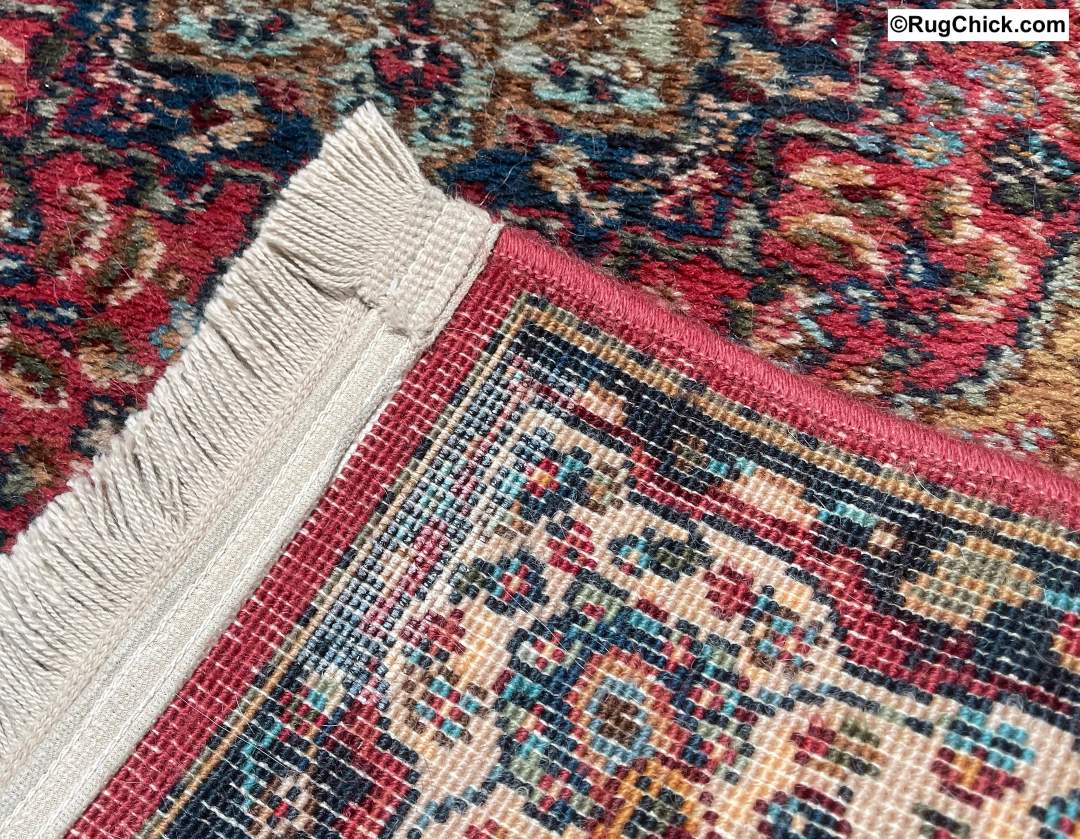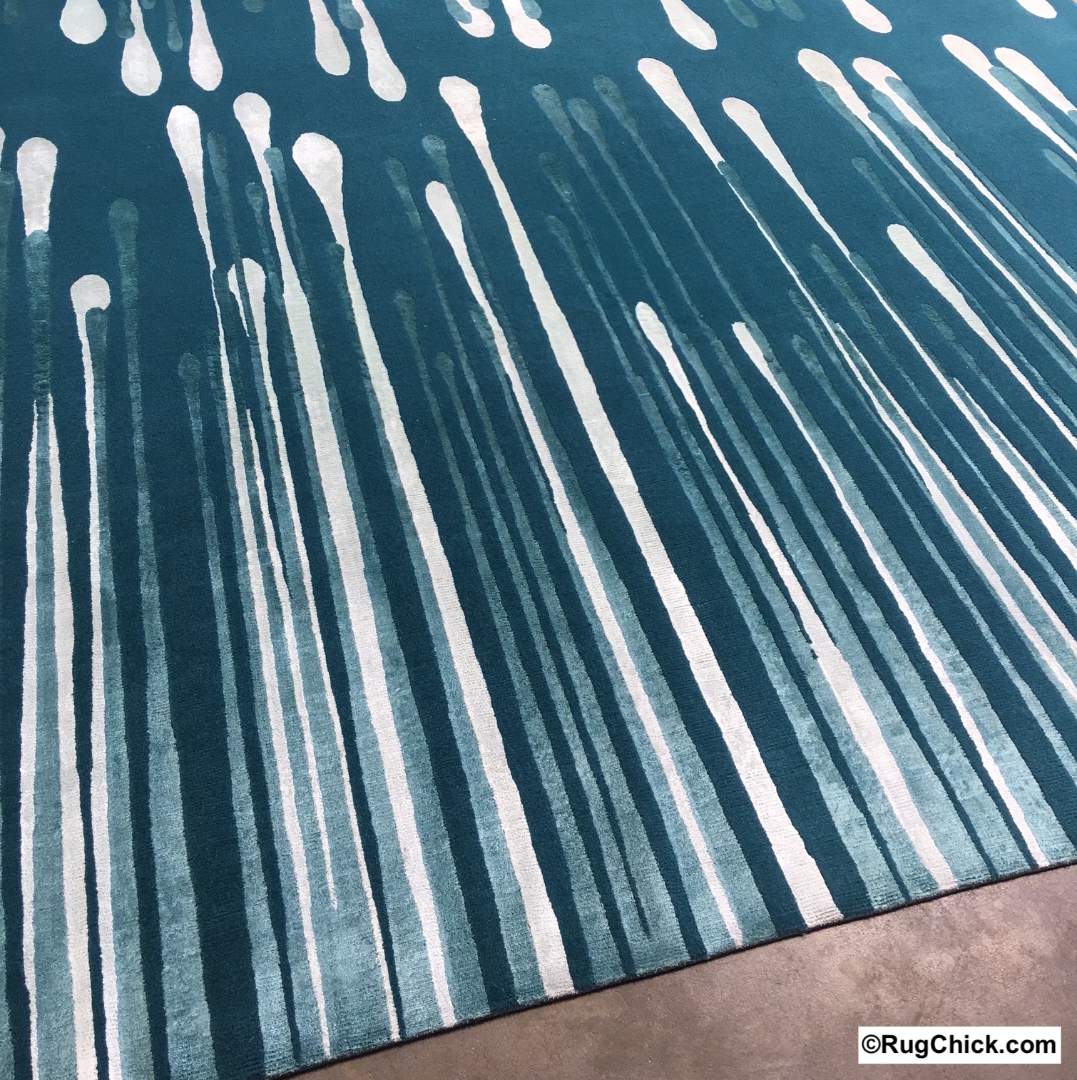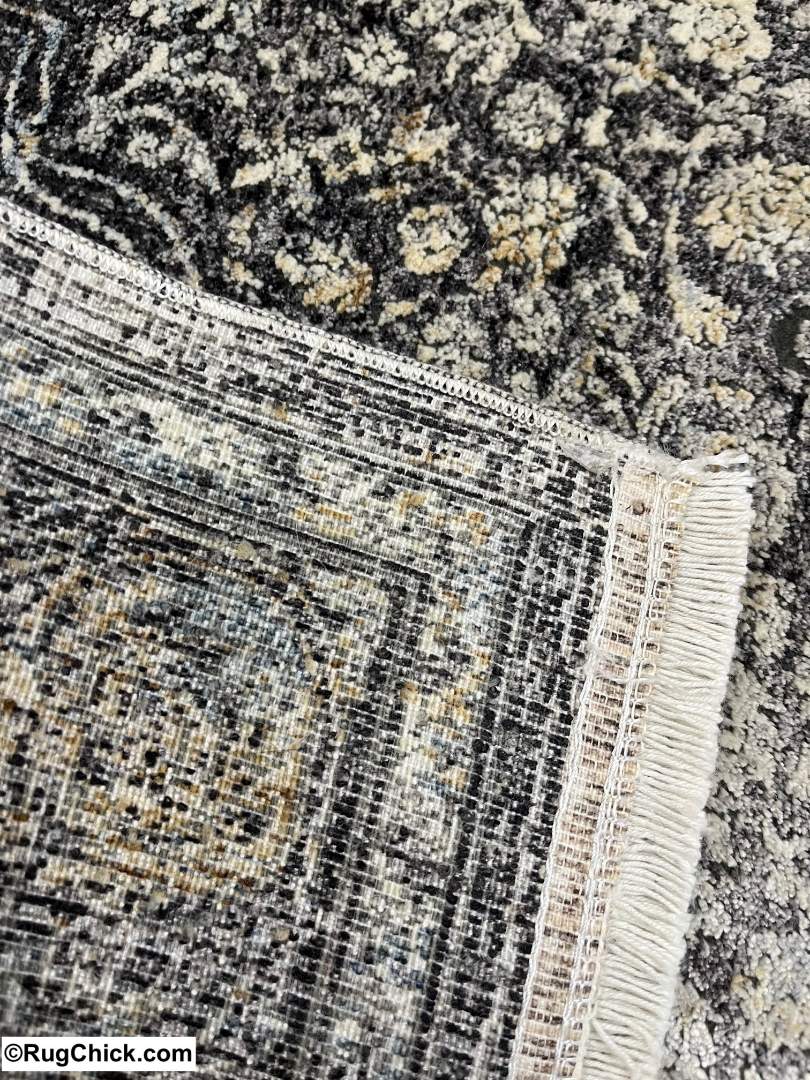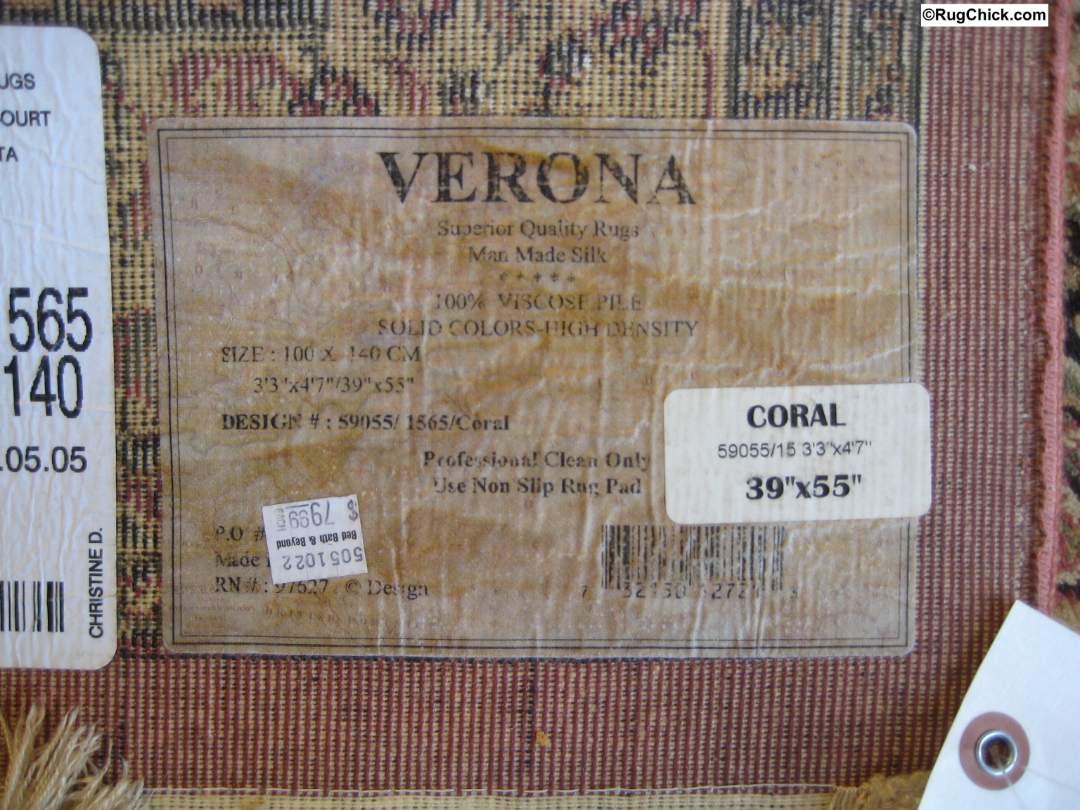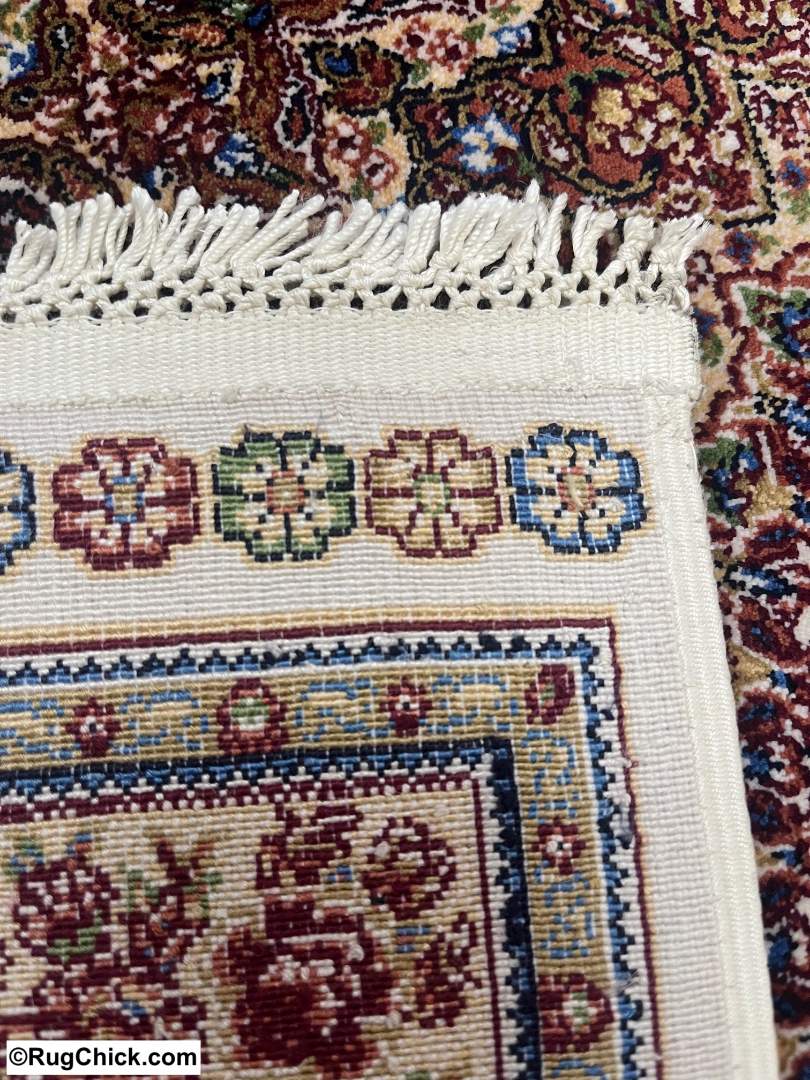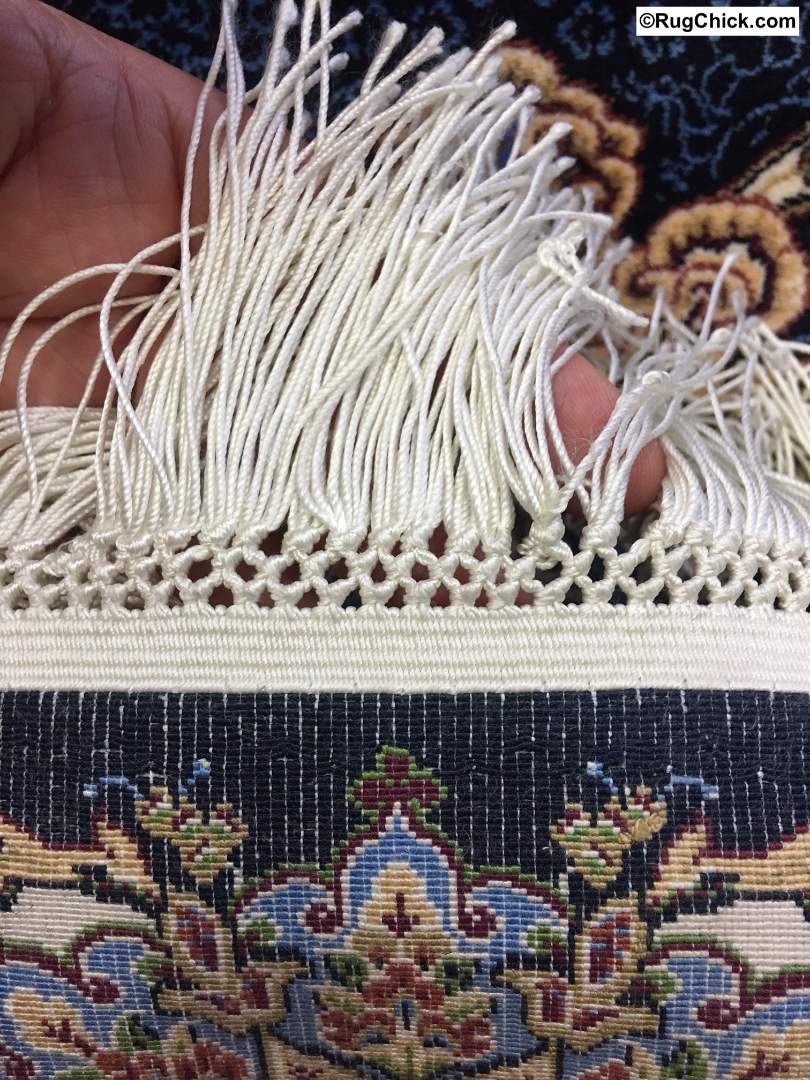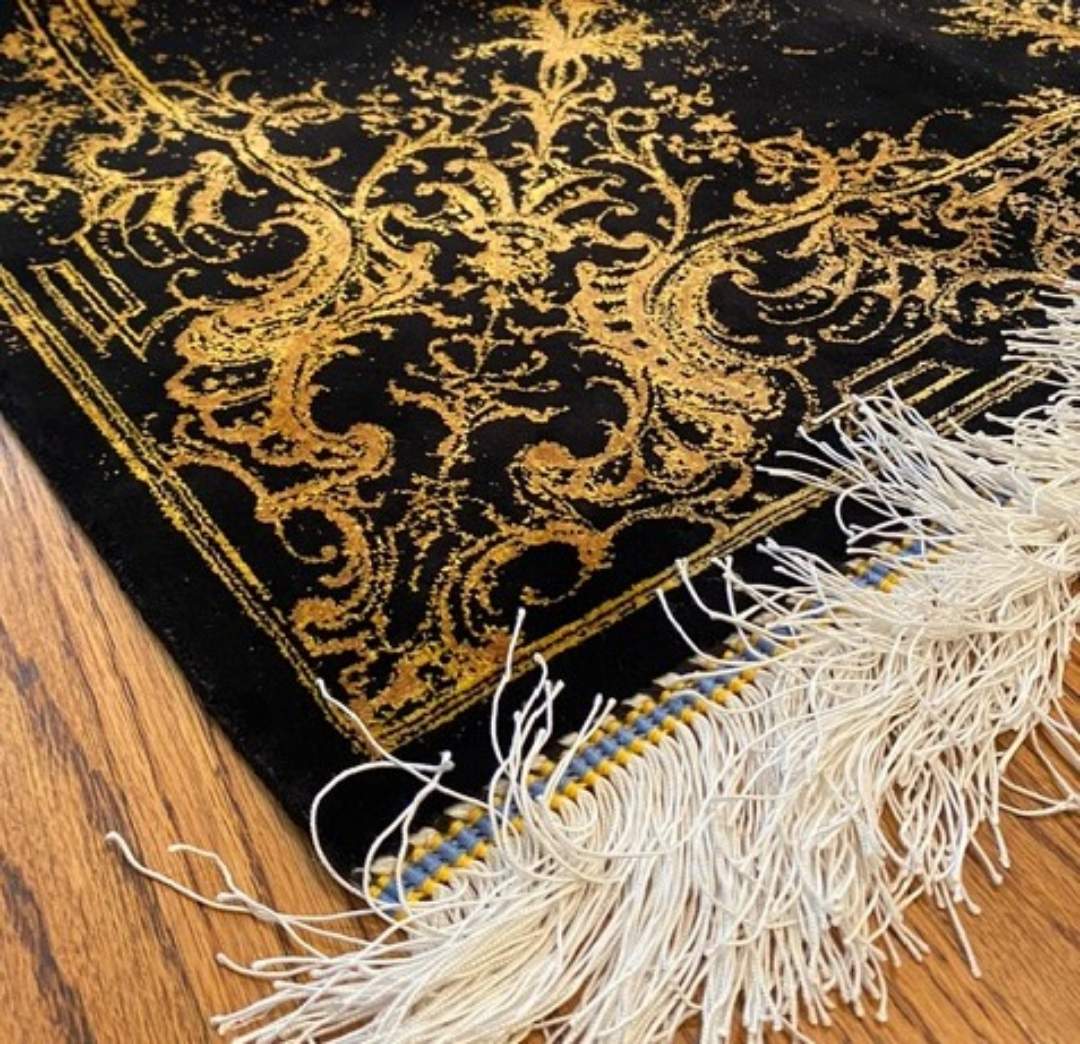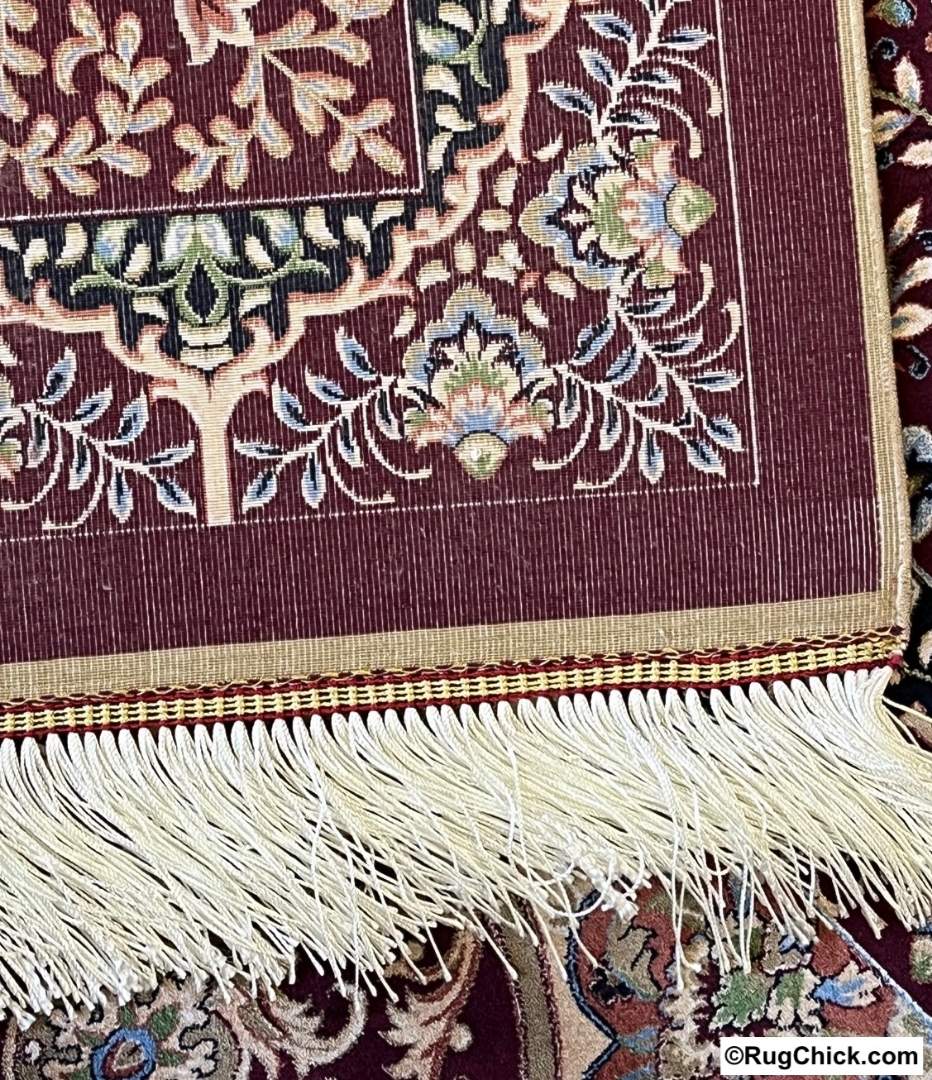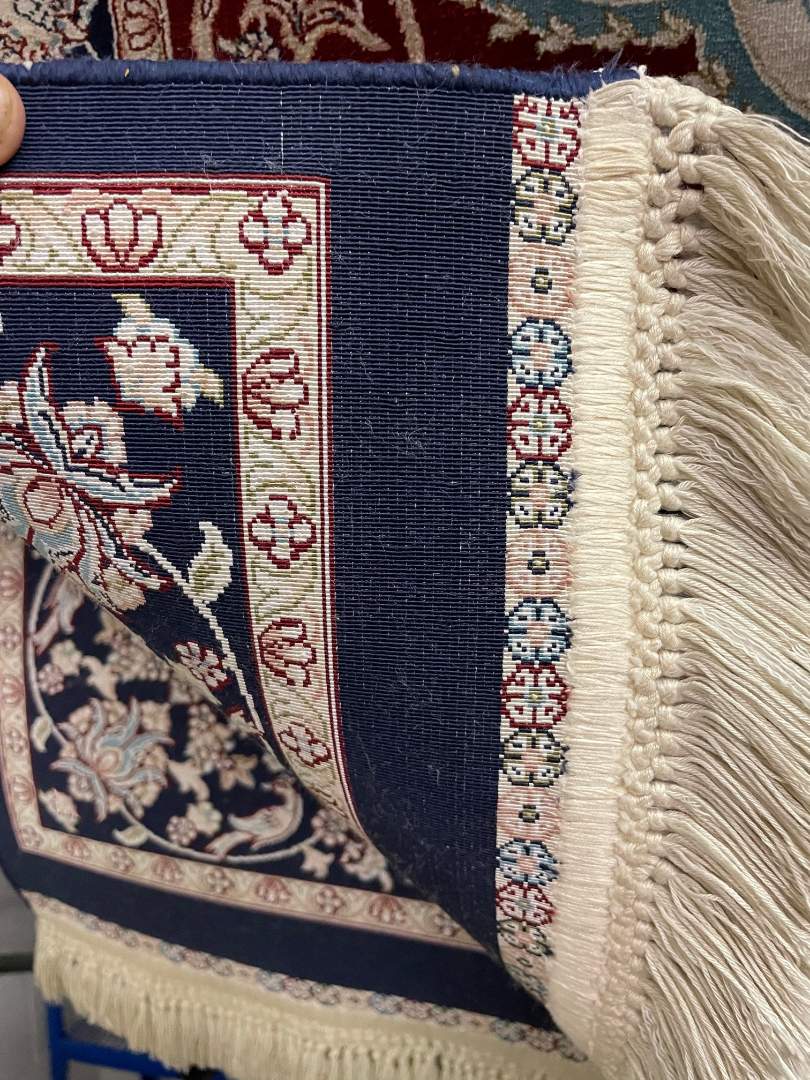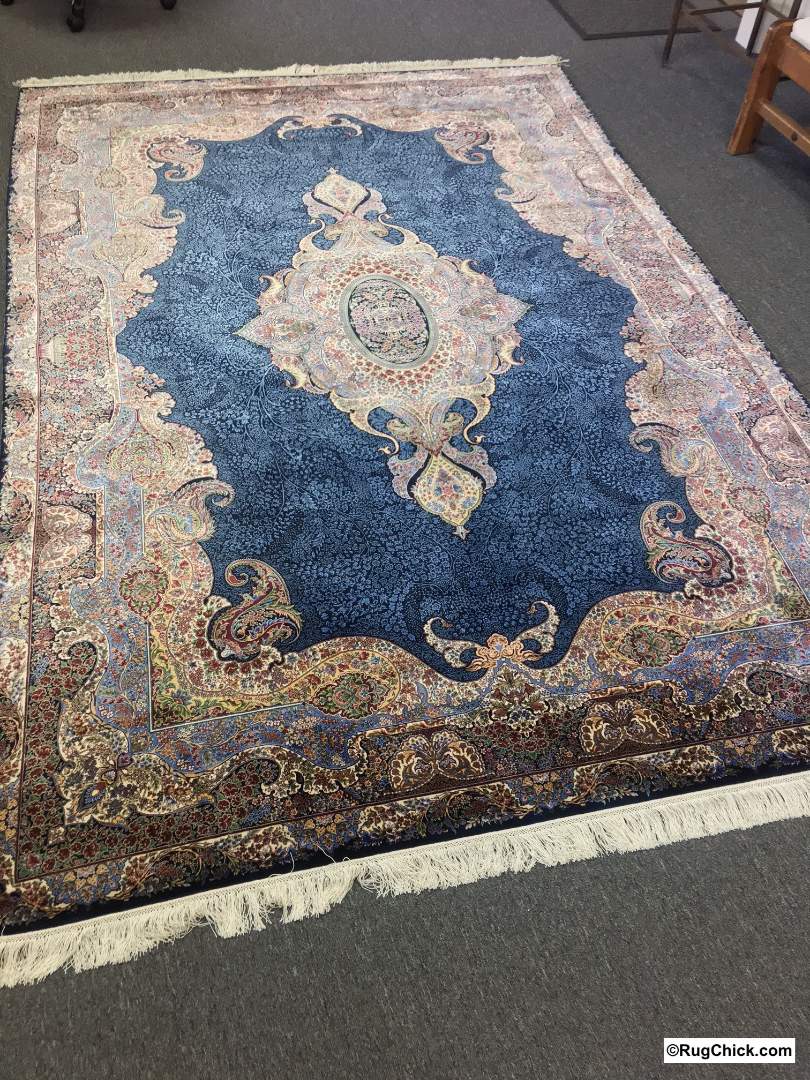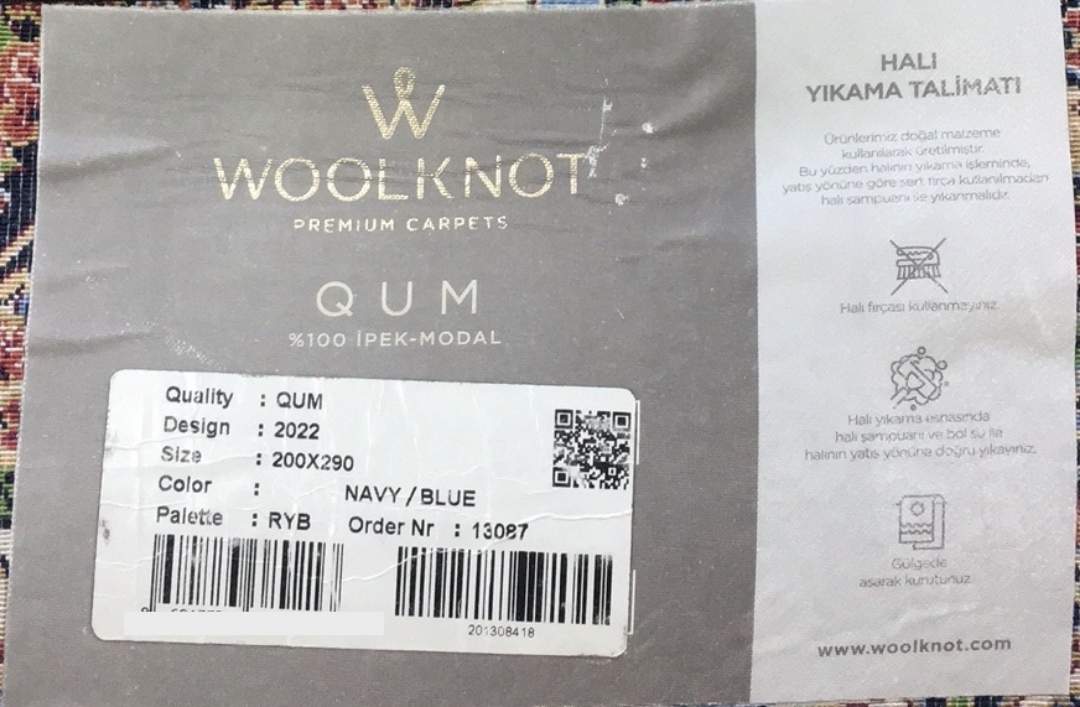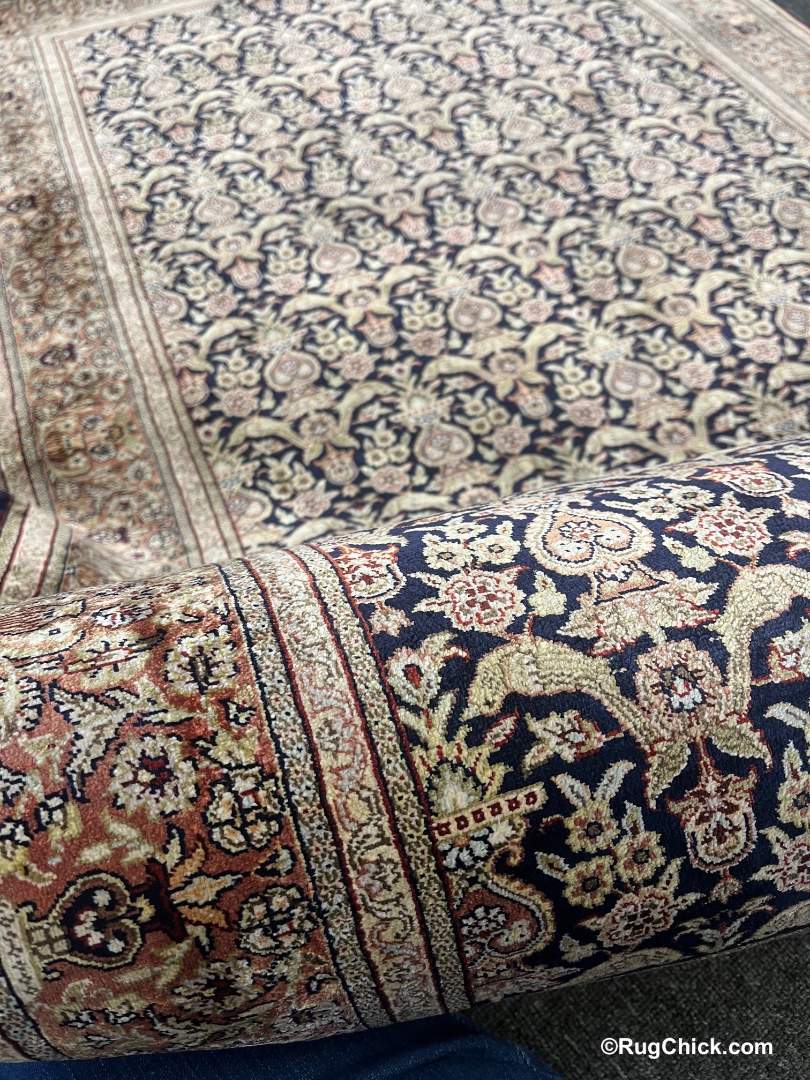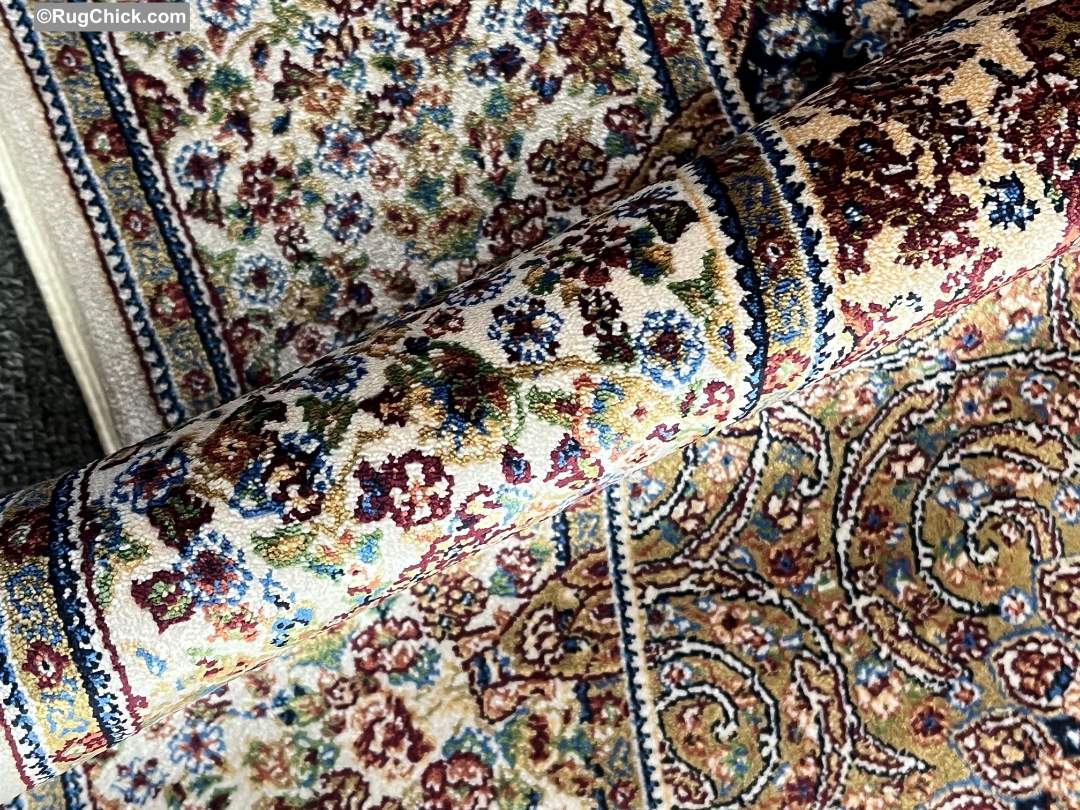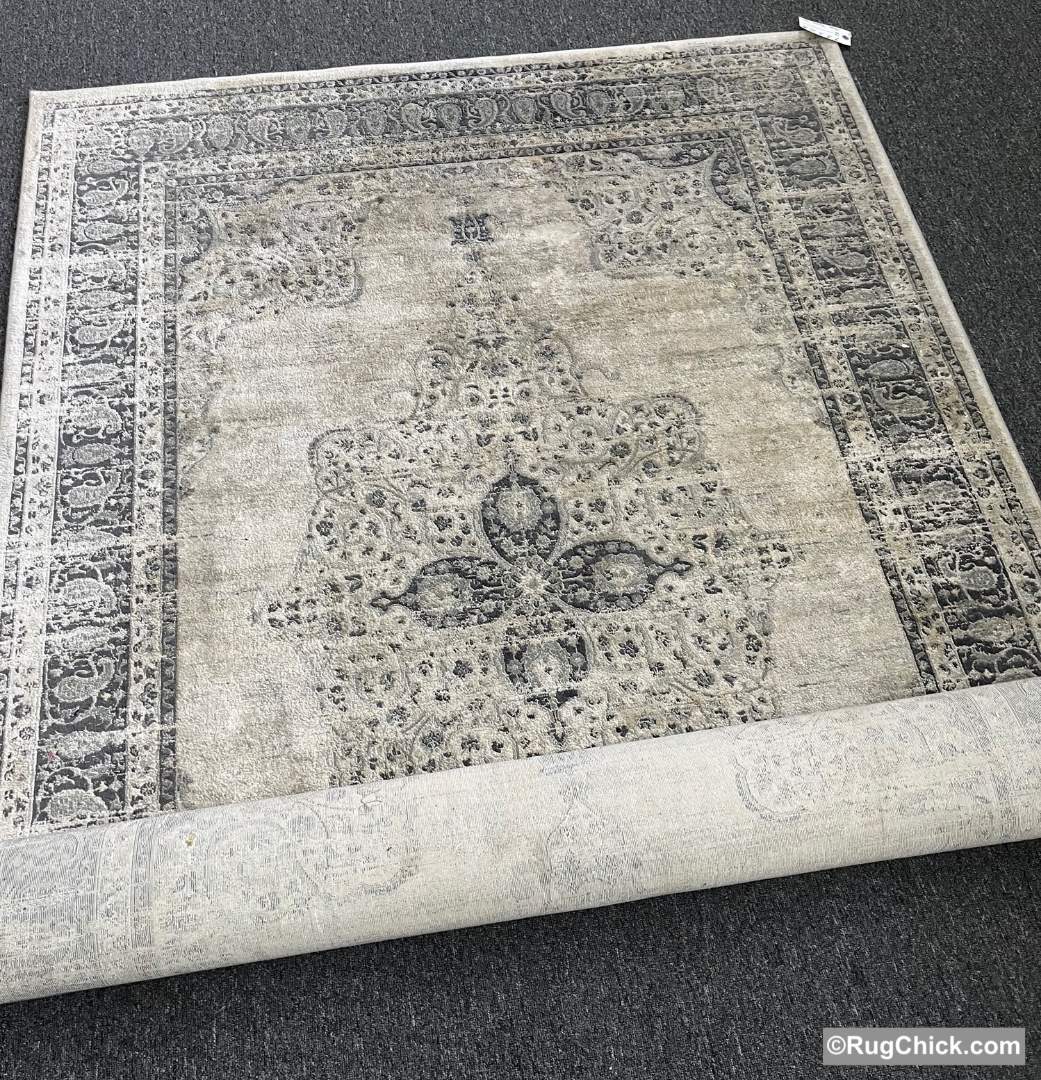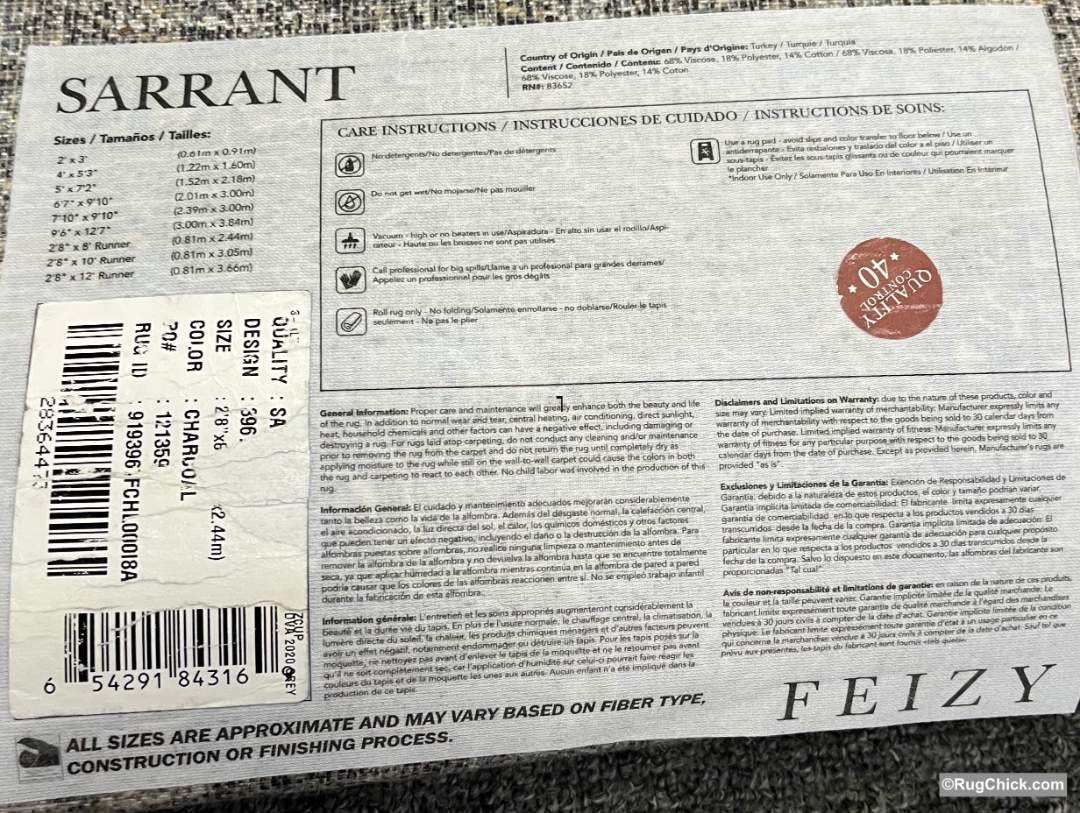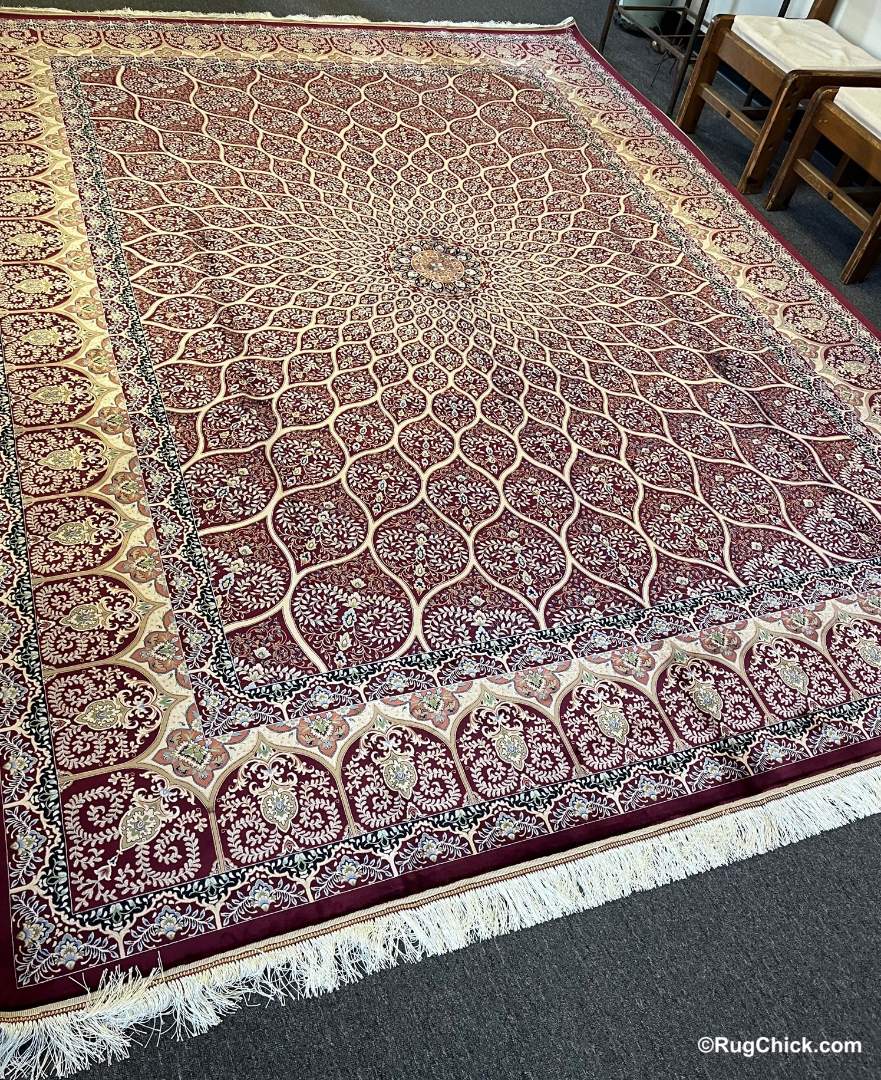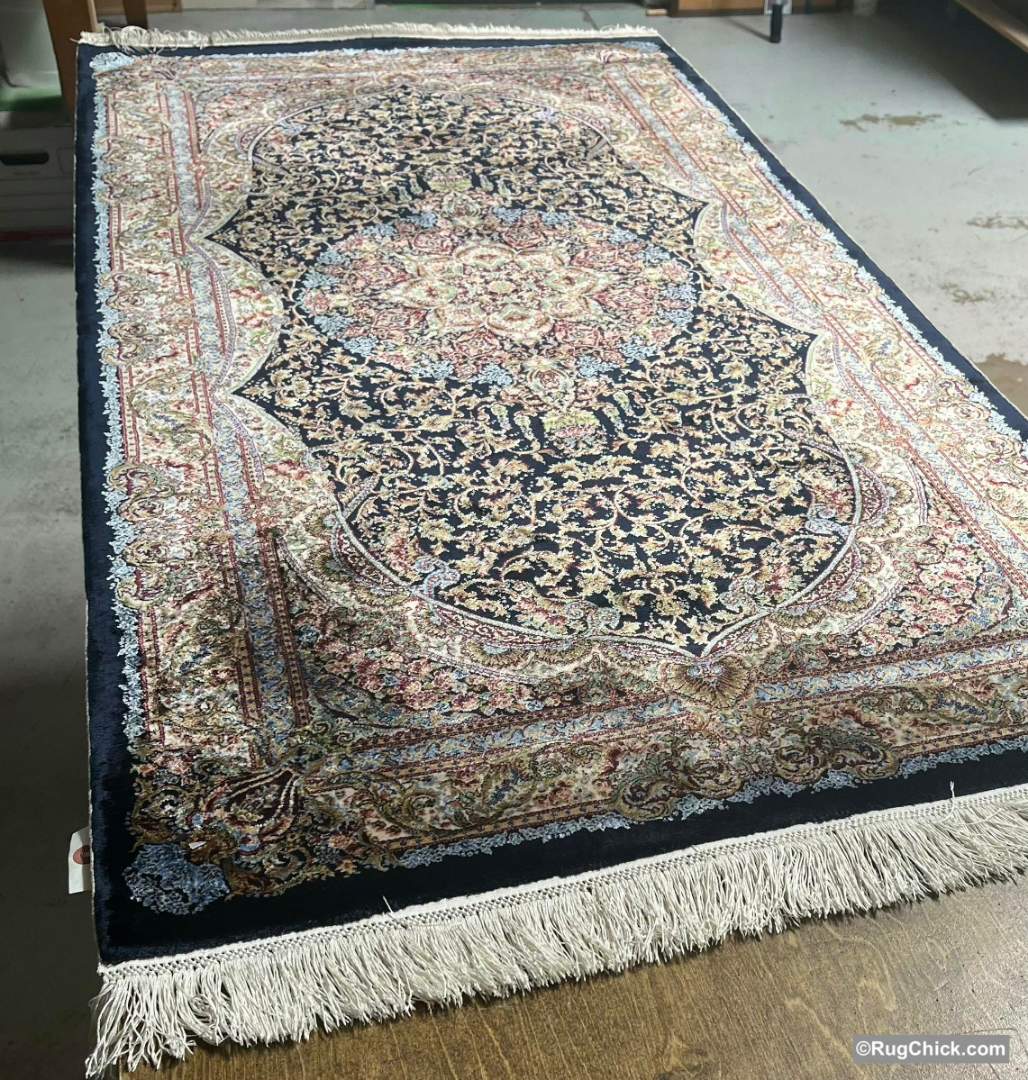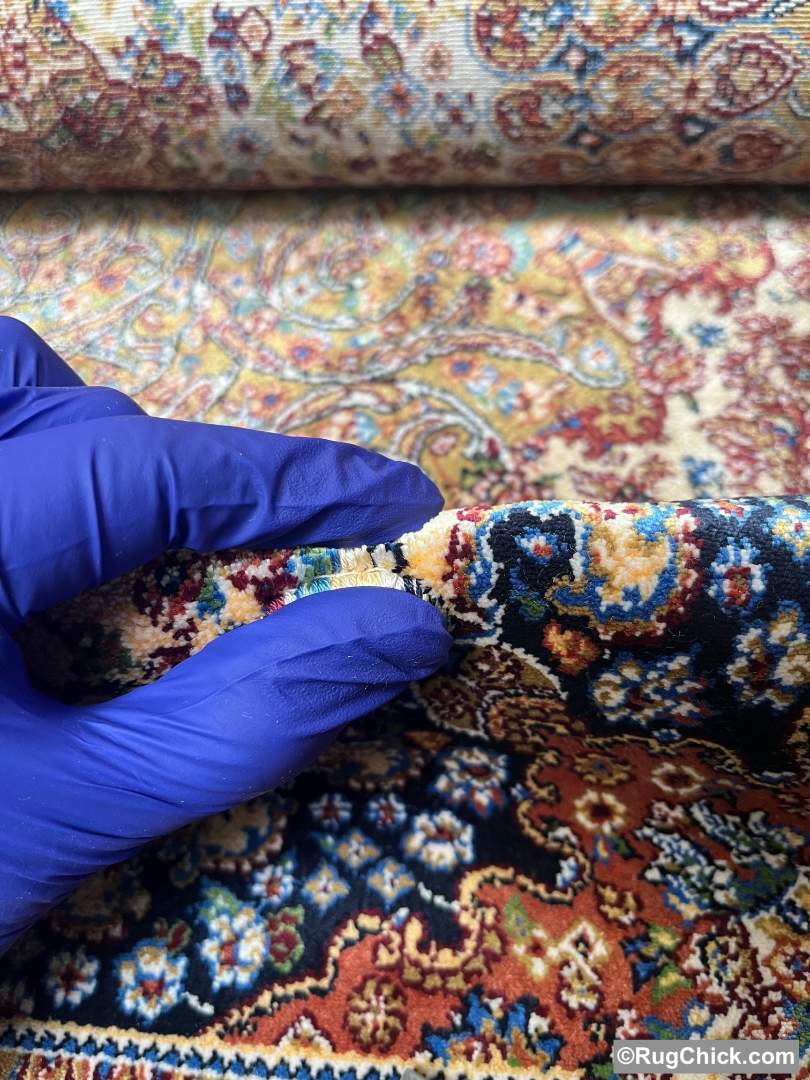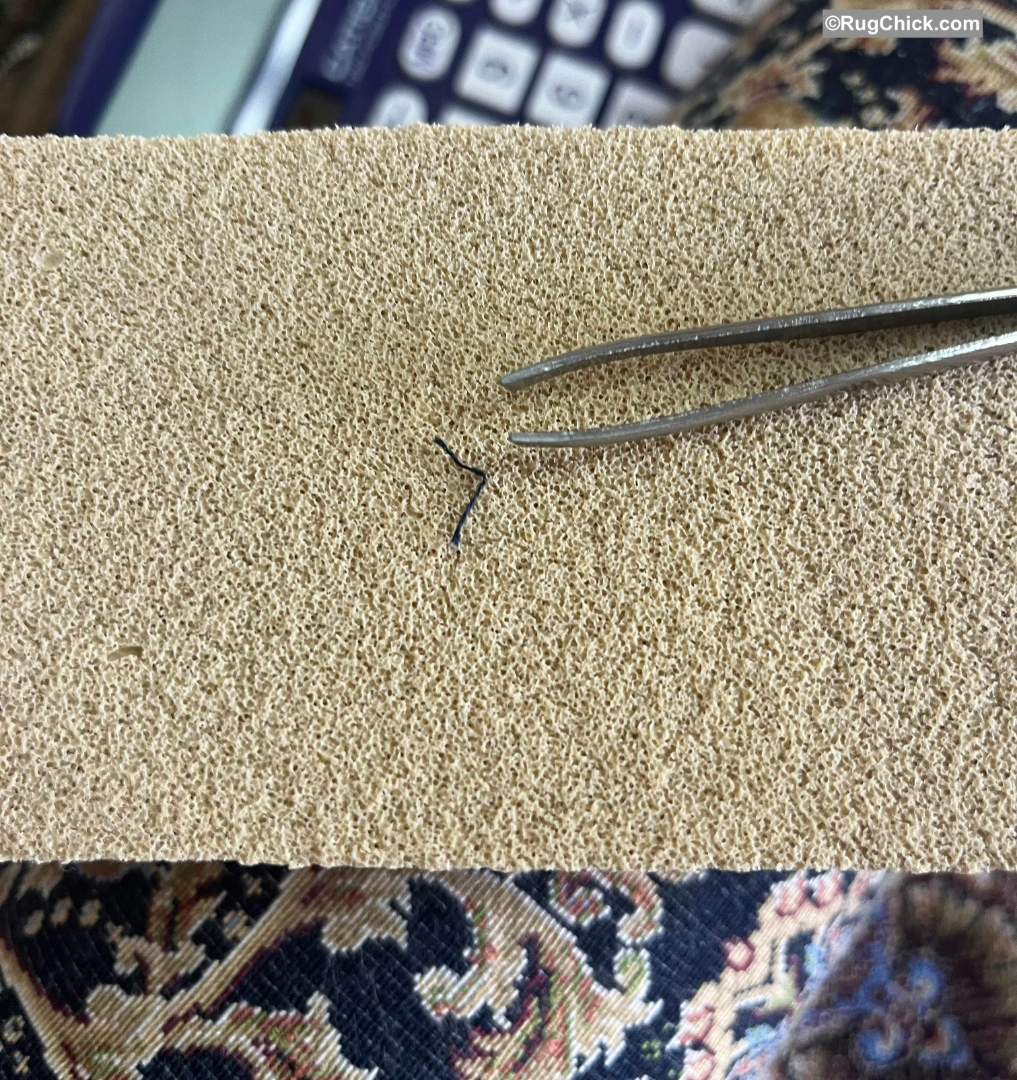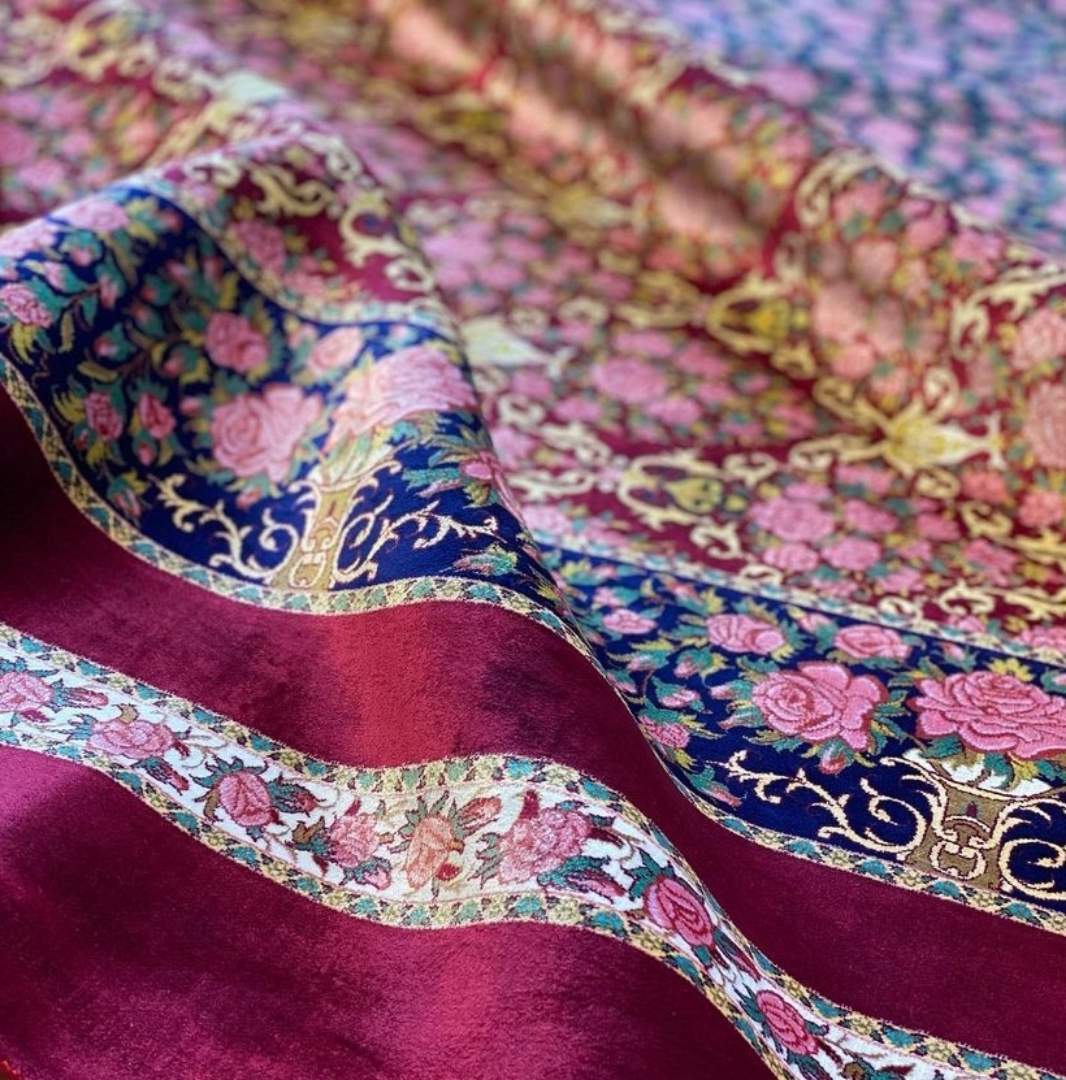Silk Rug Scams (ALL Buyers Beware)
If you are looking at buying a silk rug, and if you are being asked to pay thousands (or tens of thousands), PLEASE get a second opinion.
Of the inquiries I receive asking me to evaluate silk rugs people are considering buying, many are being misled. The rugs are fake silk instead of real silk, or they are machine made rugs instead of quality hand knotted.
Interior designers are being lied to by some rug suppliers. Tourists are being lied to by some rug merchants. Buyers are being lied to by some online and in-person rug stores.
I am not saying that all rug sellers are dishonest.
What I am saying is that I am seeing enough deception going on today from my little corner of the globe, and the amount of money involved is high enough, that I am deciding to anger a few in the rug world for the sake of protecting as many consumers as I can.
I love the rug world too much to see it degraded by unscrupulous rug sellers.
When one person gets ripped off in a rug purchase, they carry that bad experience with them for years. No one likes to be taken advantage of.
In a world where most do not have the skills to identify fiber types, weave types, or qualities in textiles, it is easy for the bad apples to spoil the whole industry.
So I would like to help even the playing field here by highlighting an area where many buyers are being misled.
If you are looking at buying a silk rug, and it is being sold at thousands (or tens of thousands), please get at least one second opinion before you buy.
Even if your cruise ship company has endorsed the rug bazaar you are visiting in Turkey, get a second opinion.
Even if the place you are shopping at is “Instagram famous”, get a second opinion.
Even if the rug store is on a list of government-referred rug stores given to you on your travels around the world, get a second opinion.
Even if the rug store has impeccable reviews on social media or Etsy – if you are being asked to pay thousands for a silk rug – please get a second opinion.
ESPECIALLY, if they are asking you to pay cash instead of using your credit card, which would offer you some fraud protection.
If you are NOT being asked to pay thousands for a “silk” rug, and you end up paying hundreds for a rug that the seller swears to you is actually worth thousands, don’t get mad when you find out it is a fake and might be worth less than what you actually paid for it.
Seriously…you already knew when you bought it that it was probably a fake. 🙂
Today’s Persian Design “Silk” Rugs Being Machine Made in Turkey
Machine made rugs in the past century have always been easy to spot.
They had a stiff handle to them. Clearly visible machine sewn fringe attached to the ends. Machine serged and stitched finish along the length edges.
Even people without a rug background could spot these as likely being made by machine.
This kept the market honest… for the most part.
A store could not sell a machine made rug at handmade prices as easily.
Things have changed now.
Two major technological advances in rug production have made today’s machine woven rugs much nicer, and much finer.
The machines creating these rugs have the capacity now to POWER LOOM with tufts so small that they can create incredibly detailed and colorful rugs.
The other factor is the fake silk fiber. With the introduction of bamboo modal (an artificial silk fiber used in clothing) rugs can be made with luster and softness that makes a nice artificial silk rug.
They often call this fiber “bamboo silk” or “modal silk” which though this is telling the truth, sometimes customers only hear the SILK part. They do not recognize that these are FAKE silk.
Real silk is made from silkworms. Fake silk today is primarily viscose/rayon, and other regenerated cellulose fibers, which comes from heavily chemically processed wood pulp.
Some of the names used for fake silk fibers sound nicer than calling them FAKE SILK. These are: viscose, rayon, Art Silk, bamboo silk, banana silk, modal silk, as well as brand names – Luxcelle, Silkette, Tencel® and Lyocel®.
In Morocco you are also seeing fake silk called “cactus silk.”
Some people choose artificial silk deliberately. They might not like the way that real silk rugs are made, through killing large numbers of silkworms. Or, they may want to buy a rug at a price point that is not at the real silk level.
When these new machine “power-loomed” rugs first came out, they still had the obviously “added on” fringe and machine-stitched edging that are the identifiers of machine woven rugs.
Machine woven artificial silk (viscose) with machine stitched sides and added on fringe. View from the back corner.
These machine made rugs were initially an affordable way to get a “silk-like” decorative rug at a fraction of the cost of an authentic handwoven silk rug. Kind of like fast fashion, getting that designer knock-off that you do not cry for weeks over after you spill red wine on it.
You could get a room size Belgian machine loomed viscose rug for under $600. They were a great buy for a “silky” style knock-off.
However, most knew they were buying artificial and machine made, and paying well under $10 per square foot for it, instead of over $100+ per square foot for a hand knotted real silk rug.
When Rug Fashion Becomes Rug Fraud (Turkish Power-Loomed Bamboo Modal Rugs)
Over the past decade there has been a concerted effort to try to make machine woven “silk” rugs pass as handwoven.
I wish I could say the motivation for this is to pay homage to the craft, but from what I can see, the only motivation is to convince someone to pay thousands of dollars for a rug they should only be paying hundreds for.
In Turkey, the main bodies of these rugs are being made by ”power loom” machines. Fringe and side length finishes are created separately and then attached by hand to the main rug body. This is removing the main identifier of machine made rugs, those machine stitched edges and obviously added-on fringe.
This allows rug merchants to show a customer a rug mentioning that these edges are “hand-finished” and be technically telling the truth, while all of the rest of the rug is machine made.
Pretty sneaky, huh?
When a few rug manufacturers are putting in SO MUCH effort to try to mislead buyers, the fakes get harder and harder to spot, and the best in the cleaning industry are continually watching for these dangerous changes to pop up.
Honestly, I think today many rug sellers are not educated well enough on the actual craft of weaving to be able to correctly identify hand-knotted versus power-loomed rugs. It is tough even for those in this business to spot some of the very good copies.
Rug cleaning professionals often are MORE aware of these deceptive details than rug retailers are because “we” have to be.
Rug cleaners need to clean based on fiber type, so fiber testing is a daily task. We also need to be aware of potential problems that certain rug production types (and eras) are known for.
The best rug cleaners have INCREDIBLE pre-wash inspection skills, and they often spot problems BEFORE they happen. Usually this is because they missed something once with a similar rug, and learned through that bad experience. We have all learned over the decades through professional training AND the painful school of trial-and-error.
But the rug makers do NOT make it any easier these days. Some are continually trying to cut corners without cutting their prices so they can increase their net profit even though this is at the expense of quality and longevity.
Extra work to create a fringe finish on a machine woven artificial silk rug to try to make it look handwoven.
Back view of another fringe finish on a machine made power-loomed Turkish bamboo modal rug trying to make it look handwoven.
Within my own network of cleaning peers, we often buy new rug samples in order to cut them open to see what is being done to the fibers, and the construction, to help cut costs.
We also do test “spills” on them for performance education. This helps us know which new rugs are going to be the most durable and easier to maintain and keep clean.
We use the power of our network to help protect and care for our clients’ rugs, and also to help them with future rug purchases. We tell them what to buy and what to run from.
Rug Buying Abroad – A Couple Warning Signs
Buying rugs abroad is undoubtedly a once in a lifetime experience for most. The beauty of so many rugs, and seeing the weavers work at a craft thousands of years old is amazing.
This is absolutely something to add to your bucket list.
I just want to share a few tips to help temper what might be an impulse purchase in the excitement of world travels where a few rug merchants might mislead visitors for the sake of a less-than-honest sale.
It will not be every rug merchant. Just a few.
If you ever find you are misled by a rug merchant on a trip, I hope you post a review, or issue a complaint, to help protect others from the same trap.
Recently I had several clients share similar Turkey cruise shopping stories and how they were misled into buying machine woven artificial silk rugs that they believed to be handwoven real silk.
The recommended rug store had silkworm cocoons prominently on display at the entrance. There were weavers at looms showing demonstrations of rug weaving by hand, tying each small knot by hand.
However, the rugs that were shared ended up being “bamboo silk” power-loomed rugs.
The rug merchants were careful with their wording. They did NOT say the rugs were made by machine, but instead said they were made on a “power loom” with four women at the loom.
Though technically this may be true, with people monitoring the machine while it does all of the work, this is being set-up to intentionally mislead tourists into vastly over-paying for rugs that should be selling at fabulously affordable machine made prices.
A traditionally hand-knotted silk rug of high quality takes months (if small) and a year or more (if large) to weave. The price reflects this time, material, labor, and quality.
It is not surprising to hear of people 15 or more years ago spending fifty or more thousands of dollars for a room-size, excellent quality, hand-knotted real silk Turkish Hereke rug. A rug that with proper care would last generations, and hopefully hold its value, depending on the market, and how well it has been taken care of.
A machine power-loomed rug can be produced in mass, multiples an hour, and then the edges are completed and finished. Fringe and side finishes are created separately, and then attached by hand to the machine made rug body.
When these rugs first appeared online a few years ago, I found them on a site called HALIKOY to buy directly from Turkey. I was seeing prices that were under $8 US per square foot after you converted the metric size and Turkish currency. I could get a large Persian design artificial silk rug 8×10 for well under $700 at that time, and this was the retail asking price.
Their line called “WOOLKNOT” has quite detailed Persian and Turkish rug designs, made by machine (power-loomed) and clearly labeled as bamboo modal silk, so these were clearly identified as fake silk fibers.
Here is the page that shows many of the choices of bamboo silk rugs in these traditional designs:
HALIKOY (WOOLKNOT catalogue)
https://halikoy.com/urun-kategori/woolknot-hali/woolknot-hali-ipek/
I am assuming that those listed prices meant this store was still making a nice profit at that price point.
They appear to now have a distribution center in the US in Georgia, as I have seen rugs with their label on the back being sold locally. The label has sections still written in Turkish, so buyers will not be able to know the specifications of their purchase, or the care instructions… unless they read Turkish of course.
Under the name WOOLKNOT it says QUM, and then in Turkish “100% IPEK-MODAL.”
Qum is a weaving region in Iran known for its quality handwoven silk rugs. IPEK is the Turkish word for “silk” – and MODAL is of course modal.
So technically this label is stating the rug is made out of modal silk, not real silk. However, it does not state it is machine made on the label, and I wonder how many local buyers will know that modal is bamboo?
Interestingly enough, this company named after wool has no rugs made of wool. Only synthetic and viscose (bamboo silk) fibers on their US website at this time. Perhaps this will change.
I only saw machine woven (power-loomed) rugs in their US catalog, but nothing on their US website that mentions clearly that these rugs are machine made. I am not sure what the rug stores distributing these rugs are telling their customers. These rugs do appear to pull up in searches of some rug store websites when you type in “silk” in their inventory.
These rugs are nicely made by machine. I just hope shoppers are being told the truth about their production in these stores, and that the prices these rugs are selling at are at a reasonable level that reflects machine made production.
The rug sellers may not be skilled in identifying rug fibers or rug construction, but they certainly know what their wholesale costs are, and that would be what they theoretically would be basing their prices on.
Generally, here in the US, a rug retail store will buy rugs wholesale and sell them at a 2-3 times markup.
This makes sense when you are talking about a physical store that is carrying a large inventory of rugs in a place they need to pay rent/mortgage on, employ a team to run it, and pay to market to bring them customers.
In today’s market, where many rug stores exist online only, and the ordering is on-demand directly from the factories, needing this same historical mark up formula for online-only operations might be questioned.
However, let’s say that this is an accepted “norm.” I certainly don’t find that formula unreasonable in my opinion.
It is TOUGH to sell rugs as a business if you are an honest rug merchant.
I will see the rug merchants who I trust locally spend MONTHS working with a client, or their client’s designer, to find the best rug to reflect their home style, and also be a good investment.
I wonder sometimes with all of the time and care being put into that process with each client, how it is possible to make those numbers work? Maybe 2-3 times is not enough after all?
That said, I have found the same exact “WOOLKNOT” Turkish bamboo silk rugs being sold on Canadian and US online rug stores, and in physical rug stores, not at an expected level of $15-20 US per square foot or less for machine made rugs. Instead, I am seeing $40-80 and HIGHER per square foot, implying that these are handwoven and real silk when they are not.
Something that many online rug stores seem to do is to put a VERY high price on their rugs, with a slash through them, and then a special discounted price. Their rugs always seem to be on sale. I wonder if any of these stores sell at their original crazy prices? (I hope not because even the “special pricing” with these rugs sometimes still seems a bit off target.)
Some sites avoid the deception of having a fake pricing structure by having member and non-member pricing, which can equally be a big price difference – but I suppose that is easier to explain for them.
It is kind of like the rug stores having a 75% off all rugs sale, usually a going out of business sale, which often ends up with rugs being sold at very nice profit levels, because most rug shoppers do not know what they are buying – they just see a huge starting price pulled out of the ether, and crossed out for what seems to be a screaming deal. Until… they get the rug appraised, or try to sell it, and realize that they actually overpaid.
Power-loomed Turkish viscose rug, after a year of use graying in the field from general soil/use. Viscose fibers do not hide soiling well.
On Etsy, for example, when you search “Turkish silk rugs” or “Persian silk rugs” you will find these same rugs at all different price points. Some stores are honest clearly listing that these are power-loomed bamboo modal silk, and others not mentioning anything along those lines.
One online rug store I came across in a Google search for “Persian Silk rugs” had pages celebrating the beauty and quality of “Persian Silk Qum” hand-knotted rugs, yet ALL of the rugs being sold were Turkish power-loomed bamboo modal silk rugs in Qum-inspired designs.
Their specifications in the small fine print did state these were made in Turkey, were bamboo modal silk, and were power-loomed. But this seems a little bit like the cruise-endorsed gallery with the silk cocoons in the foyer, with weavers at work, and stacks of rugs that look “silky” but are not quite what is being suggested.
It seems like a bit of “bait and switch,” right?
Viscose machine made rugs are also being presented at quite high prices on certain websites, purely based on the brand name they are under (because they are all being made at the same factories).
If you google “Verona Viscose rug” you can find a few listing as high as $36 per square foot, with a sale price at $28 per square foot, for a machine woven, with machine edging, rug that costs a few dollars a square foot wholesale. That is a selling price that is in the hand-knotted range, not for large scale production machine made rugs, in my opinion.
Are Machine Woven (Power-Loomed) Bamboo Silk Rugs A Bad Buy?
Some of these are VERY pretty, and very soft. I understand the appeal.
If you love the look, you are getting it at a price you are happy to pay, and you know UP FRONT you are buying a machine woven artificial silk rug, then no – it is not a bad buy.
As long as you are being informed of the facts about the rug, and being charged a reasonable price that you are happy to pay, then it is a win-win.
There is a big difference, however, between being sold a rug at $10 per square foot versus a hand-knotted real silk rug rate of 10x more per square foot.
This would be similar to buying a painting by an artist, the real deal, versus getting a print of that painting.
One will last a long time, may or may not retain its value, or increase if it is an exceptional creation. The other will not last long, but may remain a way to enjoy something lovely for years in your home.
Bamboo silk modal is NOT a long lasting fiber. Spills, heavy foot traffic, and inattentive vacuuming can cause damage rather quickly.
Power-loomed construction is NOT a long lasting rug construction type. Synthetic and regenerated cellulose (bamboo modal and viscose) fiber machine woven rugs in this construction will likely be a 3-8 year rug, perhaps longer with extra care and attention.
These will NOT be rugs that last a century as traditional higher quality hand-knotted rugs do with proper care.
Bamboo silk fibers fade, they easily stain, and being wood-based they are prone to fungal (mold) issues when in damp conditions. You have to be sure to blot and dry spill areas right away. Using a hair dryer on cool/warm if necessary on spill areas. Getting it dry quick is key with spills.
Bamboo silk fibers have a texture that is very reflective. These new rugs look almost as if the surface has been sprinkled with powdered sugar. It’s a very interesting effect. It is not actually powdery, it just looks like it with the little white flecks when brand new.
This extreme light/dark variance will wear down in foot traffic areas and regular vacuum areas, so rotating these rugs will help even this up over time if you are placing it in a regular use area. The fibers will also “blossom” (which means untwist and crush) so the texture gets to be a bit more frayed in high friction areas.
The bigger issue with these rugs is STRUCTURAL with the power-loomed construction. These fibers are held together mostly by pressure rather than through the intricate (and time consuming) wefting work that exists in traditionally hand-knotted rugs.
When power-loomed rugs begin to stretch out of square (due to heavy furniture or heavy traffic), or if they wear/tear along any of the edges (from vacuuming), this causes the bamboo silk fibers to start to pull loose. This leads to fiber loss and tears. In some areas you will begin to see widespread pulls/snags and you can easily pull these strands free.
Some labels will tell you “do not pull loose threads, trim instead.” Some labels will also tell you to NOT use a vacuum with a brush to avoid damage. In reality, these fibers are not anchored in place strongly, and it will not take much to cause damage if these rugs get a lot of foot traffic.
In fact, if you are able to grin open the rows of any power-loomed Turkish rug (whether a synthetic power-loomed rug at Home Depot with machine finished edges, or a bamboo silk power-loomed rug with the hand-attached edges in Turkey) and you pinch a SINGLE strand with your fingers (or a pair of tweezers), you should be able to yank this strand free pretty easily.
This actually is a way to identify a power-loomed rug (or the even lower quality India “hand-loomed rugs,” which we will be covering in another article in-depth). If you can pull a single strand free easily, it is loomed or tufted production.
Grinning open the fibers of a power-loomed Turkish rug. You can see the white foundation fiber very clearly, and how it is pinching down the tufts.
Do this at least 6 inches into the body of the rug. Power-loomed tufts are the shape of a “V”, as they are being held in place by just one stiff foundation fiber. They are not twisted or tied as a “hand-knotted” rug would be, so they pull free.
When you grin the rows open, you can clearly see the interior stuffer fibers that are holding these “V” tufts in place through pressure.
With traditionally hand-knotted rugs, each knot is twisted around two warps in a manner that you cannot pull a strand free unless the rug is damaged in that area. The knots are too secure to pull loose.
To help prevent tufts from falling free on their own, some of these power-loomed rugs have an adhesive applied to the back side of the rug. It is a clear adhesive, so you cannot SEE it, but you can feel it.
Close your eyes and feel the back side of the rug compared with the front, and if you feel any sticky, tacky texture change this is likely why.
Help With “Silk” Rugs?
The tufts used in power-loomed rugs today are very small. You get rugs that mention “a million points” of color. Not “knots,” but points. Pixels. Dots. So these designs are extremely detailed.
If you search online for “power loomed bamboo silk rugs” you will find many beautiful examples. And you will see the wide range of prices.
You can also search for “Turkish silk rugs” and “Persian silk rugs” and you will discover that many of these artificial, machine made rugs show up because those stores are targeting the same rug shoppers.
Some of these online rug stores are up front about what they are selling, and some are not.
If the price is affordable, and you love the look, then happily purchase.
If the price is at a “real silk” level, and you want to make sure what you are being presented is accurate, then asking for help would be wise.
A third party independent appraiser (not an appraiser referred to you by the rug seller) or an experienced rug care consultant, will be able to be hired for their opinion. When spending thousands, or tens of thousands, a second opinion for a small fee can be a great bit of purchasing protection for peace of mind, and possibly saving you a bit of money as well.
An appraiser who specializes in rugs should be able to get you market value details and confirm whether it is made by machine or by hand.
A rug care consultant will be able to do a fiber test and an inspection for some of the indicators of power-loomed construction, as well as be able to get you rug care details to help this purchase last longer for you whether it is real silk or artificial silk.
It is best for inspections to have the rug in hand to evaluate. Doing these by photo only can be very difficult.
Part of the identification is FEELING those edges and feeling all of the extra stitching used to attach those fringes and sides on to the machine woven rug when trying to make them look like they are handmade. The edges get stretched out of shape, or they feel extremely stiff from all of the internal stitching.
Sometimes if you are rug shopping while traveling, getting hands-on help is not possible.
Our San Diego clients often use our consulting services by email for a second opinion when they are looking at rugs abroad. They pay for input they trust when they are wondering if the rugs they are looking at buying in Turkey, Egypt, India, Iran, Bahrain, Morocco or China are what is really being presented to them. Not just the “silk” rugs – but the wool ones as well.
It’s kind of like having a knowledgeable friend with you on your trip. 🙂
If you do not have a local rug care expert to hire to help, you are welcome to reach out to me and I can see if we can help – or find someone local for you.
I am in the process of building a directory of regional rug quality consultants that rug shoppers can reach out to for advice on these “silk” rugs, and also to seek out advice on ALL rug purchases in terms of durability, cleanability, and longevity.
It can be difficult to know what is a good rug to buy today, and what is not.
It’s nice to have a trusted local rug expert you can rely on for a professional second opinion when needed, instead of only relying on the person who is trying to sell you that rug. Bookmark the site so you can come back when you need this help in the future.
Sorry for the ENORMOUS blog post here. I wanted to try to help save RugChick readers from getting mislead by the few unscrupulous rug sellers out there right now. All of the instances of fake silk rugs I have been seeing these days made me want to post a warning to the world.
I hope this helps, please share it with your friends who might be thinking about buying something silk.
Best to you, Lisa

